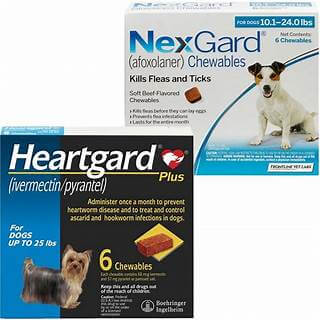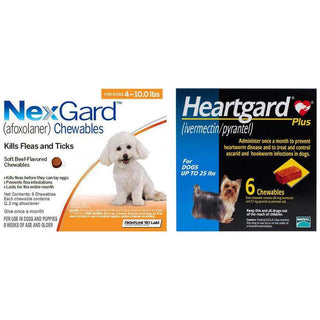Common Brand Names
Single Ingredient
- Interceptor
Mixed Ingredients
- Sentinel Flavored Tabs (with Lufenuron)
- Sentinel Spectrum (with Lufenuron + Praziquantel)
- Interceptor Plus (with Praziquantel)
- Milbemax (with Praziquantel)
Milbemycin Oxime Uses
Milbemycin Oxime is a broad-spectrum ectoparasiticide and endoparasiticide commonly used to treat internal parasites in cats and dogs.
For Cats: It controls roundworms and hookworms and prevents heartworm disease development.
For Dog: It is used to control hookworms, treat whipworms and roundworms and prevent the development of heartworm disease. Milbemycin Oxime is also effective against some species of mites.
They are combined with Lufenuron, which will treat fleas in dogs. It is not suitable for use for cats. They are combined with Praziquantel, which treats tapeworms in cats & dogs.
Method Of Application
Milbemycin Oxime comes in an oral application and is supplied as a tablet.
Dosage And Administration
The dosage and administration of milbemycin oxime will depend on the specific product and the condition being treated. Therefore, it is important to follow the instructions provided by your veterinarian and the product label.
For example, milbemycin oxime is available as a monthly chewable tablet for dogs and cats, which is usually given with a meal. The tablets come in different strengths, depending on the animal's weight. The veterinarian will determine the appropriate dosage and consider the animal's weight, overall health, and the type of parasite being treated.
It is important to administer milbemycin oxime as directed by your veterinarian and not to exceed the recommended dosage. Consult with your veterinarian before giving any medication to your pet.
Possible Side Effects
Like all medications, milbemycin oxime can cause side effects in some animals. Common side effects are usually mild and may include:
- Vomiting
- Diarrhea
- Loss of appetite
- Drowsiness
- Itching or redness at the site of the application
More severe side effects are rare but may include:
- Seizures
- Tremors
- Ataxia (loss of coordination)
- Hypersensitivity reactions (allergic reactions)
- Kidney or liver damage
Contact your veterinarian immediately if your pet experiences any severe side effects.
It's important to note that not all animals will experience side effects, and the severity of the side effects can vary depending on the individual animal and the dosage of the medication. If you notice any unusual behavior or symptoms in your pet after giving milbemycin oxime, contact your veterinarian immediately.
It's always a good idea to monitor your pet after administering any medication and to report any side effects to your veterinarian.
Precautions
When using milbemycin oxime, it is important to take certain precautions to ensure the safety and well-being of your pet. Some precautions to keep in mind include the following:
- Consult with your veterinarian before giving milbemycin oxime to your pet. Your veterinarian will be able to determine the appropriate dosage and frequency of administration based on your pet's weight, overall health, and the type of parasite being treated.
- Do not use milbemycin oxime in animals with a known allergy to the medication.
- Use milbemycin oxime with caution in animals with a history of seizures or neurological disorders.
- Do not use milbemycin oxime in animals with severe kidney or liver disease.
- Keep milbemycin oxime out of reach of children and other animals.
- Follow the instructions on the product label and consult with your veterinarian if you have any questions about how to use the medication.
- Store milbemycin oxime in a cool, dry place and dispose of unused medicine according to the instructions on the product label.
- It's important to treat all animals in the household and their environment to prevent re-infestation.
- It's important to keep your pet on a monthly heartworm preventative all year round and remember to have regular check-ups with your veterinarian.
- Notify your veterinarian of any other medications or supplements your pet is taking and any other health issues your pet may have.
Signs Of Toxicity
Signs of toxicity from Milbemycin Oxime may include vomiting, diarrhea, loss of appetite, and/or lethargy. In severe cases, seizures or muscle tremors may occur. Contact your veterinarian immediately if your pet has ingested a toxic amount of Milbemycin Oxime. In addition, it is always recommended to follow the dosage instruction provided by the veterinarian or on the product label.
Storage
Store at room temperature, between 59-77°F (15-25°C).
Disclaimer
The information provided on this page is for normal reference only and is not intended to replace veterinary advice or packaging label. You should consult your vet first. Here may have included only some of the uses, side effects, brand names, or applications.






